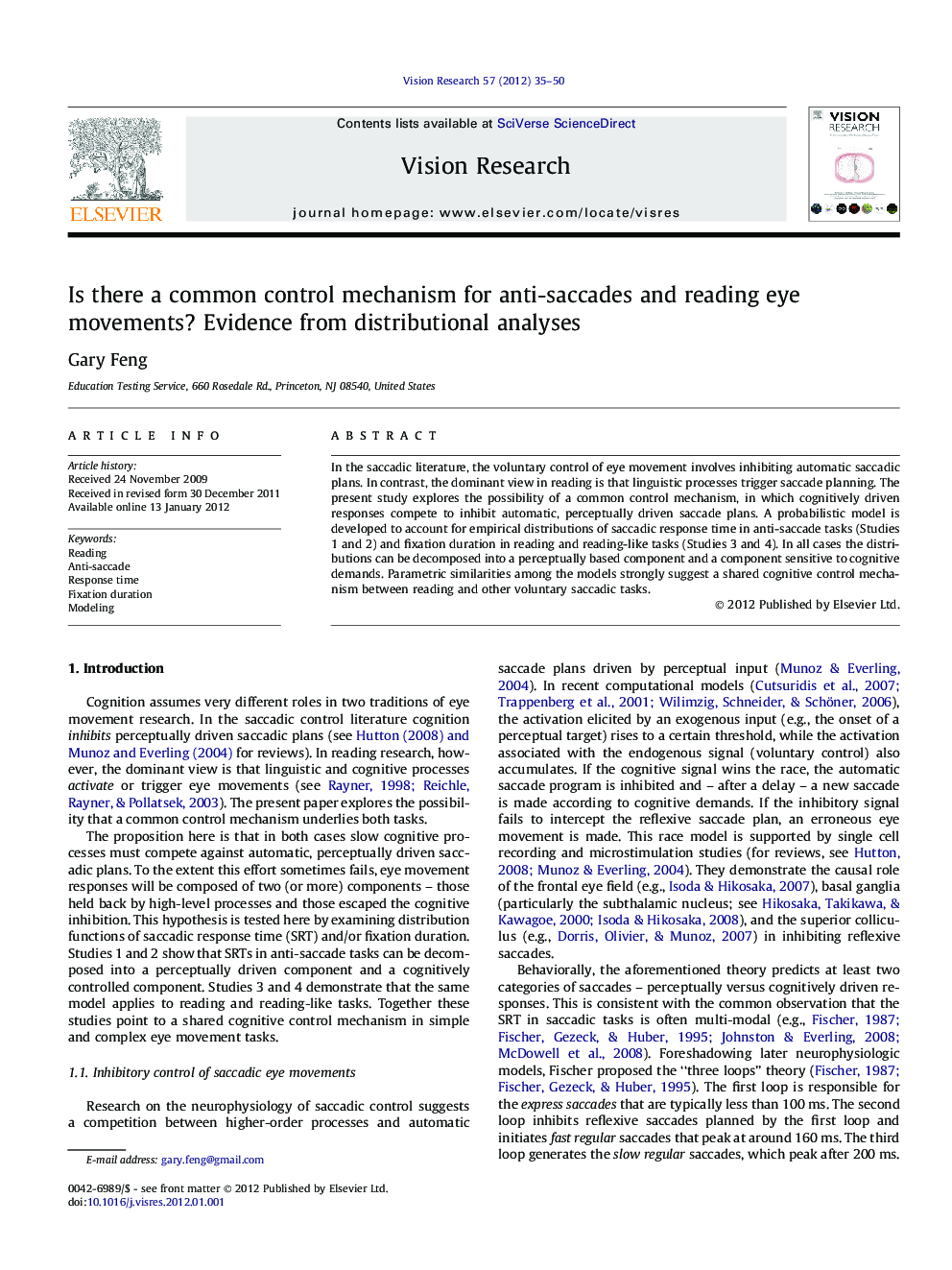| کد مقاله | کد نشریه | سال انتشار | مقاله انگلیسی | نسخه تمام متن |
|---|---|---|---|---|
| 4034036 | 1603237 | 2012 | 16 صفحه PDF | دانلود رایگان |

In the saccadic literature, the voluntary control of eye movement involves inhibiting automatic saccadic plans. In contrast, the dominant view in reading is that linguistic processes trigger saccade planning. The present study explores the possibility of a common control mechanism, in which cognitively driven responses compete to inhibit automatic, perceptually driven saccade plans. A probabilistic model is developed to account for empirical distributions of saccadic response time in anti-saccade tasks (Studies 1 and 2) and fixation duration in reading and reading-like tasks (Studies 3 and 4). In all cases the distributions can be decomposed into a perceptually based component and a component sensitive to cognitive demands. Parametric similarities among the models strongly suggest a shared cognitive control mechanism between reading and other voluntary saccadic tasks.
► Cognitive processes controls saccadic eye movements by inhibiting perceptually driven saccades.
► The competition can be modeled probabilistically by a log-logistic mixture model.
► The model explains pro-/anti-saccadic RT, correct rate, and speed-accuracy tradeoff.
► The model also explains distribution of fixation duration in reading and reading-like tasks.
Journal: Vision Research - Volume 57, 15 March 2012, Pages 35–50